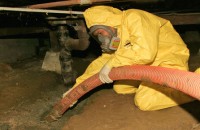Hold Your Nose, That Ain’t No Rose: A Raw Sewage Safety Q&A
 If you have ever smelled a serious raw sewage backup you have likely experienced some stomach churning. Once that smell creeps into your nostrils it’s hard to forget it. Unfortunately, raw sewage causes more problems than just a horrifying odor. Read our handy FAQ and learn what to do if you encounter a black water backup in your home or business.
If you have ever smelled a serious raw sewage backup you have likely experienced some stomach churning. Once that smell creeps into your nostrils it’s hard to forget it. Unfortunately, raw sewage causes more problems than just a horrifying odor. Read our handy FAQ and learn what to do if you encounter a black water backup in your home or business.
What is raw sewage?
Quite simply, raw sewage is waste that has not been cleaned and treated. It is the material that comes from a toilet overflow or other sewage source. Raw sewage is not just liquid; it can also contain toilet paper, feminine sanitary products, and other human wastes. It is also known as black water.
What are the classifications of sewage water?
Domestic sewage is the waste water that is produced from residential, institutional, or business buildings. It is collected by pipes and delivered to a central collection point by sewers. Industrial waste water is the waste produced by manufacturing and is generally collected and disposed of by the industries. Storm sewage is groundwater and rain. It is often collected with domestic waste in a combined sewer or it can be contained in separate storm sewers.
What causes raw sewage backups?
Sewage backups can be caused by one of four problems. Blockages are common. They are often the result of solid objects going down a drain and getting lodged between the building drain pipe and the sewer main drain pipe. A second cause can be due to deterioration. In this instance, the main sewer drain pipe collapses, ruptures, or cracks. Tree roots are the third main cause. Over time, roots can grow down into pipes, often at the joints, and continue growing through the pipes, frequently causing multiple blockages. The roots can also cause cracks and collapses. Finally, a backup can be the result of heavy rain. The sewer cannot drain the incoming volume of water fast enough and it begins to overflow.
What are the health risks of exposure?
Raw sewage is literally a hodgepodge of nasty stuff. Imagine the perfect gathering place and ideal breeding ground for almost every kind of bacteria and virus along with a seemingly never-ending population of microorganisms. Raw sewage can contain very harmful pathogens such as cholera, E. coli, and hepatitis. Exposure can cause gastroenteritis, respiratory disorders, and the giardia parasite invasion.
What kinds of protective measures do professionals take when dealing with raw sewage?
Sewage backup cleanup professionals take extreme caution when they deal with raw sewage. The main measures taken involve protective gear to prevent exposure. These pieces include disposable clothing, rubber boots, plastic gloves, and respirators when necessary.
Who should you contact for help?
If you have experienced a sewage backup, it is important to take action quickly. You should have the number of a good sewage backup company handy at all times. Water damage restoration is often required in conjunction with sewage cleanup since the dampness can get into the floor and walls, causing serious threats to your building’s foundation.
Are there any helpful tips I should know?
Yes. Be sure to keep pets, children, and the elderly away from the area as they can be more susceptible to the germs and bacteria brewing. Remove any items that can be salvaged, such as concrete yard decorations, and wash them as soon as possible. You should evacuate everyone, including pets, if the raw sewage backs up inside the home or building; it is not safe to breathe in or be around. It is not always possible to prevent raw sewage backups, but there are some things you can do to reduce the chances of a backup occurring. Make sure you have your drain lines inspected at least twice a year. Repair slow drains quickly. Do not pour grease down the drain and have your pipes flushed regularly.



